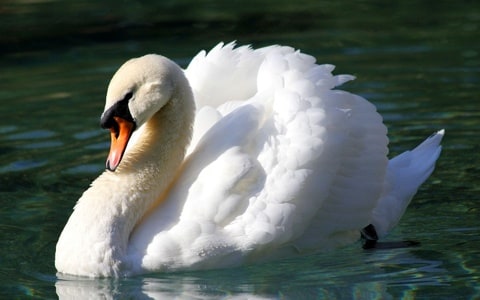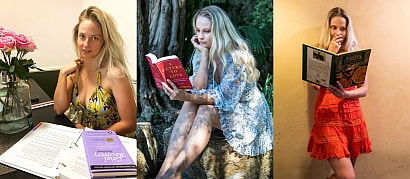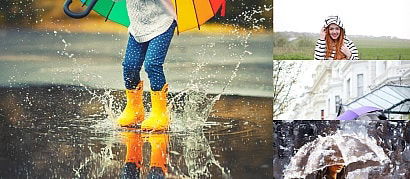Swan's Journey
The Majestic Beauty and Graceful Elegance of Swans Have Always Inspired Our Artistic Sensitivity
A popular symbol of grace and love, swans are one of the most elegant waterfowls on this planet. Known for long-lasting bonds and protectiveness, it’s no wonder swans earn so much praise.
Swans have long captivated the imagination of poets, their elegant form and graceful movements serving as a muse for countless verses throughout history. These majestic creatures, with their pristine white feathers and dignified demeanor, have become powerful symbols of love, purity, and transcendence.
While similar to other waterfowl, swans have longer necks and larger bodies. However, their shorter legs give them a not-so-graceful gait on land. In fact, there are a total of 8 swan species across the world. From the mute swan down to the Coscoroba, swans have many subtle differences if one were to look harder.
In flight, their necks straighten as they glide with slow wingbeats. But flying isn’t all they’re good at. Swans are impressive swimmers and are also known to be quite smart, enough to remember you when you’re nice to them!
Interestingly, they have different names depending on whether they’re in flight. When in flight, a group of swans is called a wedge due to their flying formation. But on the ground, a group of swans is a bank. With size being the only way to tell them apart, the female swan is a pen, and the larger male swan is a cob. Baby swans are called cygnets. Depending on the species, they are born covered in a fluffy coat of gray, brown, or white.
Swans can generally live for up to 20 to 30 years in the wild. This may vary among the species, however. For example, tundra and mute swans have an average lifespan of 19 to 20 years. Meanwhile, New Zealand and Australian black swans can live for as long as 40 years. For the first 5 to 12 months, cygnets stay with their mother but can leave as soon as 4 months, when they learn to fly. After a year, cygnets become juvenile swans with grayish feathers. They stay in flocks until they’re 4 years old and mature enough to finally be considered adults.
Swans mate for life and typically form pair bonds even before they reach sexual maturity. For example, trumpeter swans normally begin breeding around 4 – 7 years old, but have been found to form monogamous pair bonds from as early as 20 months old. Pair bonds are maintained year-round, even in gregarious species such as the tundra swan, which congregates in large flocks on wintering grounds. In many socially monogamous bird species, including swans, both males and females participate in courtship rituals before mating to provide reassurance of and strengthen these pair bonds.
Swans are monogamous animals, meaning they mate for life. Although they may find new mates if their mate dies, they generally stay with the same partner yearly. In the second year of their lives, swans create a lifelong bond with those of the opposite sex. They provide each other food, shelter, and better survivability for years to come. At 4 to 5 years old, adult swans begin mating and leave with their chosen mate to create their own nest.
All six swan species perform a variation of a courtship ritual in which the male and female face each other and bow their heads, forming a heart shape with both of their necks. Black swans also have specific feathers used for courtship and all six species are very vocal during their displays. For example, trumpeter swans make a honking sound whilst they perform synchronized swimming and head bobbing. Tundra swans and whooper swans are more subdued, however, and call softly to each other once they have mated.
Courtship rituals commonly begin in spring and differ between swan species. In these rituals, the swans perform movements similar to a dance. This can include bowing, nodding, or dipping their heads underwater. Swans maintain a lot of eye contact during courtship. This gesture is a sign of showing their devotion to one another. That’s why most of their dances involve them looking at each other from the side. In these dances, swans form a heart shape as they touch heads from time to time.
Non-invasive swans play an important role in aquatic environments. When swans pull up food, they help smaller waterfowls reach plants they can’t normally reach. Mute swans are herbivorous aquatic foragers. An individual adult swan consumes 3-4kg of submerged aquatic vegetation (SAV) per day. The remainder of their diet includes a small proportion of terrestrial plants, algae, insects, fish and frogs. In their native lands, mute swan feeding habits aid other waterfowl’s foraging as they stir up vegetation deep in the water that smaller waterfowl, such as ducks, cannot reach. If left unprotected, medium-sized predators, such as mink and raccoons, will take eggs and cygnets. Adults are not usually preyed upon unless they are injured or sick.
Mute swans, on the other hand, can be quite destructive to both plants and animals alike. This is due to their aggressiveness, large numbers, and gluttonous habits. Though they aren’t truly mute, they earned their name from being less vocal than other species of swans. The mute swan does make a soft snorting call and it hisses loudly when it is threatened. Male swans are very territorial and chase intruders away. They arch their wings over their backs and charge at the intruder. Their calls are hoarse and muffled, but they can hiss and snort when disturbed, so watch out!
The mute swan plunges its long neck underwater to forage for aquatic plants. It also eats insects, fish, worms, and frogs. Mute swans also swallow gravel to help them digest their food! What should you not feed swans? Processed food is a big no-no when it comes to swan diets. Though they can eat fresh bread, leafy greens, and grains, you can’t feed them pastries and sugary food. This might cause them to have nutritional imbalances and digestive blockages.
When people talk about swans, mute swans come to mind. This species is a popular symbol of all things pure and romantic. That’s why you often find them on Valentine’s Day gifts, wedding cake toppers, and popular dating spots. Mute swans have pure white feathers all around their body. Their bills are bright orange with a black base, and a black fleshy bump on top called a knob. Knobs are larger in cobs, especially during mating season. An adult mute swan has an average length of 4.7-5.2 ft (1.4-1.6 m). Male swans usually weigh around 24.3-26.5 lbs (11-12 kg), while females weigh 18.7-19.8 lbs (8.5-9 kg).
From Europe, mute swans were brought into North America in the 1800s as park ornaments. Today, they’re known to be an invasive species in North America. Mute swans are nonmigratory birds and do not travel far if needed. During winter, they fly in large groups to nearby places with open water. They prefer shallow water, such as low-current rivers, marshes, and estuaries or lagoons. But as long as the water’s clean and full of plants, mute swans can adapt to just about any body of water.
Mute swans have an average clutch size of 2-5 eggs. When laid, these eggs are blue-green in color, then change into a chalky white. Once hatched, cygnets can be born with gray or white down. The mute swan is found on shallow ponds, estuaries, bogs, lakes, and sheltered bays. The mute swan is an exotic species that was introduced to North America when Europeans brought it over from Europe in the 19th century. It is now found in the wild on the Atlantic Coast from New Hampshire south to North Carolina and in the the Great Lakes region. Mute swans are also found in Europe, Asia, and Africa.
Mute swans take off from the water by running very fast and flapping their wings until they build up enough speed to take off. The mute swan can fly at a speed of up to 50 miles per hour. In North America, the mute swan does not migrate, but it may move short distances from frozen water to open water. When the mute swan swims, it curves its neck into an S-shape and points its bill down. Other swan species, like the tundra swan, hold their necks up straight when they swim.
For centuries mute swans have an aesthetic appeal due to their size, color and gracefulness. In some European cultures they are a status symbol and have been domesticated. The swans bring enjoyment to many people because they are conspicuous bird that may be fed, photographed and observed for their many interesting behaviors. The swans display little fear towards humans, allowing close viewing of wild animals. The swans are sold for display in residential lakes. Mute swans have been used as biological control of filamentous algae in small ponds and to reduce nuisance problems caused by resident Canadian geese.
Swans, with their enchanting beauty and elegant demeanor, have captivated poets for centuries. These majestic creatures are often associated with grace, love, and purity, making them a popular subject in the realm of poetry.
A popular symbol of grace and love, swans are one of the most elegant waterfowls on this planet. Known for long-lasting bonds and protectiveness, it’s no wonder swans earn so much praise.
Swans have long captivated the imagination of poets, their elegant form and graceful movements serving as a muse for countless verses throughout history. These majestic creatures, with their pristine white feathers and dignified demeanor, have become powerful symbols of love, purity, and transcendence.
While similar to other waterfowl, swans have longer necks and larger bodies. However, their shorter legs give them a not-so-graceful gait on land. In fact, there are a total of 8 swan species across the world. From the mute swan down to the Coscoroba, swans have many subtle differences if one were to look harder.
In flight, their necks straighten as they glide with slow wingbeats. But flying isn’t all they’re good at. Swans are impressive swimmers and are also known to be quite smart, enough to remember you when you’re nice to them!
Interestingly, they have different names depending on whether they’re in flight. When in flight, a group of swans is called a wedge due to their flying formation. But on the ground, a group of swans is a bank. With size being the only way to tell them apart, the female swan is a pen, and the larger male swan is a cob. Baby swans are called cygnets. Depending on the species, they are born covered in a fluffy coat of gray, brown, or white.
Swans can generally live for up to 20 to 30 years in the wild. This may vary among the species, however. For example, tundra and mute swans have an average lifespan of 19 to 20 years. Meanwhile, New Zealand and Australian black swans can live for as long as 40 years. For the first 5 to 12 months, cygnets stay with their mother but can leave as soon as 4 months, when they learn to fly. After a year, cygnets become juvenile swans with grayish feathers. They stay in flocks until they’re 4 years old and mature enough to finally be considered adults.
Swans mate for life and typically form pair bonds even before they reach sexual maturity. For example, trumpeter swans normally begin breeding around 4 – 7 years old, but have been found to form monogamous pair bonds from as early as 20 months old. Pair bonds are maintained year-round, even in gregarious species such as the tundra swan, which congregates in large flocks on wintering grounds. In many socially monogamous bird species, including swans, both males and females participate in courtship rituals before mating to provide reassurance of and strengthen these pair bonds.
Swans are monogamous animals, meaning they mate for life. Although they may find new mates if their mate dies, they generally stay with the same partner yearly. In the second year of their lives, swans create a lifelong bond with those of the opposite sex. They provide each other food, shelter, and better survivability for years to come. At 4 to 5 years old, adult swans begin mating and leave with their chosen mate to create their own nest.
All six swan species perform a variation of a courtship ritual in which the male and female face each other and bow their heads, forming a heart shape with both of their necks. Black swans also have specific feathers used for courtship and all six species are very vocal during their displays. For example, trumpeter swans make a honking sound whilst they perform synchronized swimming and head bobbing. Tundra swans and whooper swans are more subdued, however, and call softly to each other once they have mated.
Courtship rituals commonly begin in spring and differ between swan species. In these rituals, the swans perform movements similar to a dance. This can include bowing, nodding, or dipping their heads underwater. Swans maintain a lot of eye contact during courtship. This gesture is a sign of showing their devotion to one another. That’s why most of their dances involve them looking at each other from the side. In these dances, swans form a heart shape as they touch heads from time to time.
Non-invasive swans play an important role in aquatic environments. When swans pull up food, they help smaller waterfowls reach plants they can’t normally reach. Mute swans are herbivorous aquatic foragers. An individual adult swan consumes 3-4kg of submerged aquatic vegetation (SAV) per day. The remainder of their diet includes a small proportion of terrestrial plants, algae, insects, fish and frogs. In their native lands, mute swan feeding habits aid other waterfowl’s foraging as they stir up vegetation deep in the water that smaller waterfowl, such as ducks, cannot reach. If left unprotected, medium-sized predators, such as mink and raccoons, will take eggs and cygnets. Adults are not usually preyed upon unless they are injured or sick.
Mute swans, on the other hand, can be quite destructive to both plants and animals alike. This is due to their aggressiveness, large numbers, and gluttonous habits. Though they aren’t truly mute, they earned their name from being less vocal than other species of swans. The mute swan does make a soft snorting call and it hisses loudly when it is threatened. Male swans are very territorial and chase intruders away. They arch their wings over their backs and charge at the intruder. Their calls are hoarse and muffled, but they can hiss and snort when disturbed, so watch out!
The mute swan plunges its long neck underwater to forage for aquatic plants. It also eats insects, fish, worms, and frogs. Mute swans also swallow gravel to help them digest their food! What should you not feed swans? Processed food is a big no-no when it comes to swan diets. Though they can eat fresh bread, leafy greens, and grains, you can’t feed them pastries and sugary food. This might cause them to have nutritional imbalances and digestive blockages.
When people talk about swans, mute swans come to mind. This species is a popular symbol of all things pure and romantic. That’s why you often find them on Valentine’s Day gifts, wedding cake toppers, and popular dating spots. Mute swans have pure white feathers all around their body. Their bills are bright orange with a black base, and a black fleshy bump on top called a knob. Knobs are larger in cobs, especially during mating season. An adult mute swan has an average length of 4.7-5.2 ft (1.4-1.6 m). Male swans usually weigh around 24.3-26.5 lbs (11-12 kg), while females weigh 18.7-19.8 lbs (8.5-9 kg).
From Europe, mute swans were brought into North America in the 1800s as park ornaments. Today, they’re known to be an invasive species in North America. Mute swans are nonmigratory birds and do not travel far if needed. During winter, they fly in large groups to nearby places with open water. They prefer shallow water, such as low-current rivers, marshes, and estuaries or lagoons. But as long as the water’s clean and full of plants, mute swans can adapt to just about any body of water.
Mute swans have an average clutch size of 2-5 eggs. When laid, these eggs are blue-green in color, then change into a chalky white. Once hatched, cygnets can be born with gray or white down. The mute swan is found on shallow ponds, estuaries, bogs, lakes, and sheltered bays. The mute swan is an exotic species that was introduced to North America when Europeans brought it over from Europe in the 19th century. It is now found in the wild on the Atlantic Coast from New Hampshire south to North Carolina and in the the Great Lakes region. Mute swans are also found in Europe, Asia, and Africa.
Mute swans take off from the water by running very fast and flapping their wings until they build up enough speed to take off. The mute swan can fly at a speed of up to 50 miles per hour. In North America, the mute swan does not migrate, but it may move short distances from frozen water to open water. When the mute swan swims, it curves its neck into an S-shape and points its bill down. Other swan species, like the tundra swan, hold their necks up straight when they swim.
For centuries mute swans have an aesthetic appeal due to their size, color and gracefulness. In some European cultures they are a status symbol and have been domesticated. The swans bring enjoyment to many people because they are conspicuous bird that may be fed, photographed and observed for their many interesting behaviors. The swans display little fear towards humans, allowing close viewing of wild animals. The swans are sold for display in residential lakes. Mute swans have been used as biological control of filamentous algae in small ponds and to reduce nuisance problems caused by resident Canadian geese.
Swans, with their enchanting beauty and elegant demeanor, have captivated poets for centuries. These majestic creatures are often associated with grace, love, and purity, making them a popular subject in the realm of poetry.
Added to
People who voted for this also voted for
Western Movie Posters: Jack Hoxie
Genevieve Morton Is Well-Read
Family Friendly Gifs
Favorite TV Shows (Live-Action)
The Evolution of Bill Paxton--
Flora
Liminal OligArchitecture "A.I." Generated
Adore Megan Irwin ♥
Beautiful Julie Ordon
Mechanical Coin Banks
Francis F. Coppola collection
Faces So Beautiful It Hurts - Hande Erçel
Women With Weapons
Silver net
Like a MM
More lists from James OK
Ostentatious Male Peacocks
Beautiful Lithuania
Some Evocative Images
Hitachi Seaside Park in Japan
Rainy Day
Sorbet albeit not quite Sherbet
There can be only ONE Scuttle
 Login
Login












































